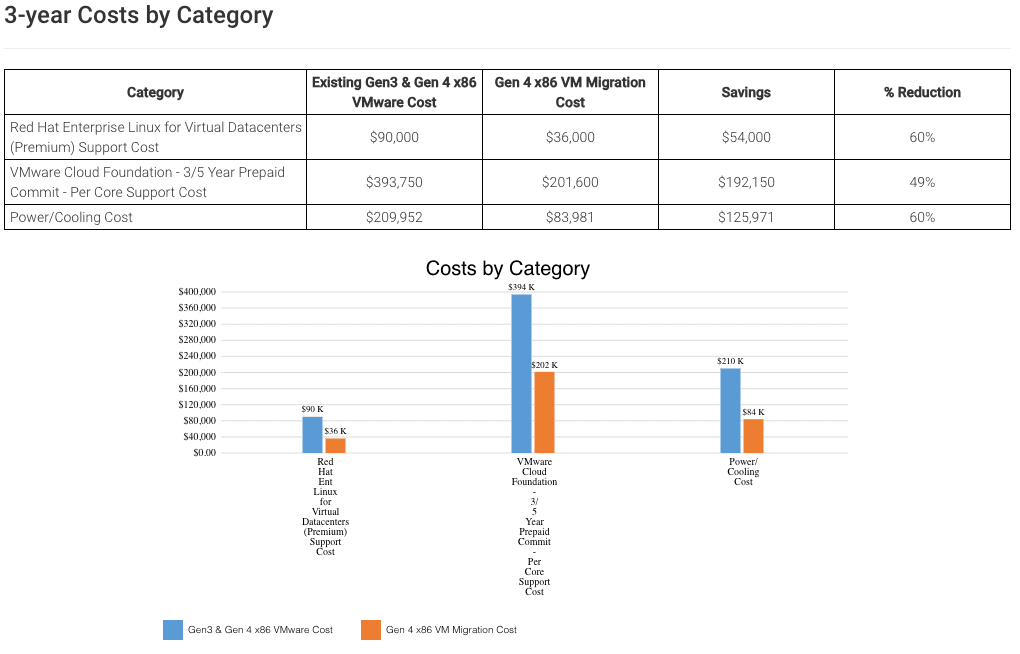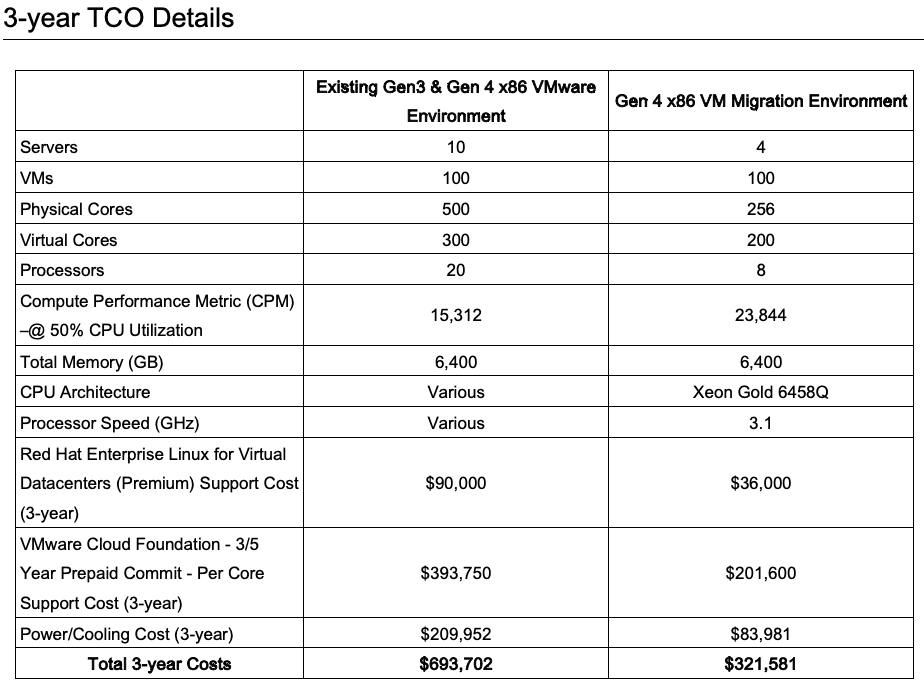VMware by Broadcom License Savings: Hardware Optimization
Optimize now, save later
Many VMware customers are now exploring new hypervisor options, including both virtualization and containerization, as part of their new long-term IT strategy. With the acquisition of VMware by Broadcom there are growing concerns from customers around potential price increases. However, to allow ample time for a smooth transition, they are currently opting to renew their VMware licenses. During this interim period, it is crucial for organizations to optimize their existing VMware environment and licensing agreements as much as possible. This proactive approach helps them avoid potential cost increases associated with VMware by Broadcom’s new core-based licensing model. By fine-tuning their current server footprint, businesses can ensure they are not overpaying while they develop and implement their future infrastructure plans.
An example of VMware optimization
Optimizing a VMware environment by migrating existing VMs from older processors to newer, more efficient ones can significantly enhance performance while reducing the number of cores required. This strategy allows organizations to maintain the same performance levels with fewer cores, thereby reducing the overall core count. Consequently, this reduction positions companies favorably in negotiations with VMware by Broadcom, especially under the new core-based licensing model. To ensure complete optimization, we employ our Composite Performance Metric (CPM), which measures and verifies the relative performance of each core and processor. The CPM guarantees that every migration step maximizes performance efficiency. For example, such an optimization could lead to substantial cost savings, as demonstrated in the potential savings below.


Simplify your cloud, datacenter, and software decisions with analytics that optimize your costs, time, and resources.
